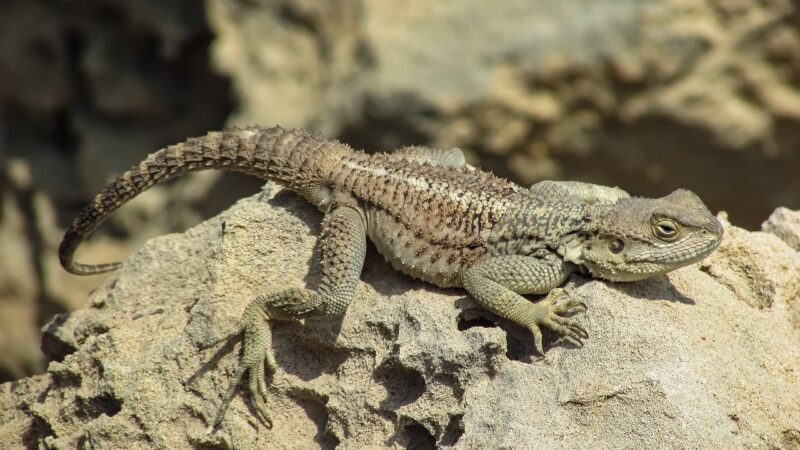The Most Surprising Ways Animals Have Adapted to Their Environments
November 16, 2024

When we think about adaptation in the animal kingdom, we often picture the grand transformations of iconic species like Charles Darwin’s finches or the spectacular color changes of chameleons. However, the adaptations seen across different species are far more diverse and sometimes even shocking. This article explores the most surprising ways animals have evolved to fit their environments, showcasing nature’s brilliance in overcoming challenges and thriving in various habitats.
1. The Immortal Jellyfish: A Phenomenon of De-aging
The immortal jellyfish (Turritopsis dohrnii) is a remarkable example of biological adaptation that has fascinated scientists. This jellyfish can revert to its juvenile form after reaching maturity, effectively cheating death. When the jellyfish experiences stress or injury, it undergoes a process called transdifferentiation, where its cells transform into different types, allowing it to return to its earlier life stage. This unique ability not only showcases resilience but also highlights potential advances in understanding human aging and regenerative medicine.
2. The Arctic Tern: The Longest Migration
One of the most extraordinary adaptations is exhibited by the Arctic tern (Sterna paradisaea), known for its incredible migratory journey of approximately 44,000 miles annually. Breeding in the Arctic during the summer, these birds migrate south to the Antarctic for the winter. This seasonal travel allows them to experience two summers each year, maximizing their feeding opportunities and survival rates. The Arctic tern’s navigation skills, driven by earth’s magnetic field and sun positioning, underline the incredible adaptation of migratory behavior in animals.
3. Cuttlefish: Masters of Disguise
Cuttlefish (Sepia spp.) are not just remarkable for their intelligence but also for their stunning adaptability through camouflage. They can alter their skin color and texture rapidly, mimicking the appearance of their surroundings. This talent not only helps them evade predators but also allows them to ambush prey effectively.
Interestingly, their unique adaptations extend to a sophisticated communication system with other cuttlefish, using color changes as signals to convey mood, intention, or territory claims. This remarkable ability to adapt visually emphasizes the evolution of survival strategies in the animal kingdom.
4. The Axolotl: A Marvel of Regeneration
The Mexican axolotl (Ambystoma mexicanum) is often called the ‘Mexican walking fish’ due to its aquatic nature, but it presents some astonishing adaptations. This creature is famous for its regenerative capabilities, able to regrow entire limbs, spinal cord, and even parts of its heart and brain without scarring. Unlike many other amphibians that undergo metamorphosis and transition to land, axolotls retain their juvenile features as adults in a process known as neoteny, allowing them to thrive in aquatic environments. Researchers are studying their regenerative properties for insights into human healing and tissue regeneration.
5. The Naked Mole-Rat: Lifespan and Cancer Resistance
Naked mole-rats (Heterocephalus glaber) are fascinating creatures with a range of surprising adaptations. Living in large underground colonies, these unique rodents are known for their resistance to cancer and extended lifespan, living up to 30 years, significantly longer than most rodents. Their social structure, where a single queen reproduces while the others serve as workers, demonstrates cooperative living that aids survival in harsh underground environments. Naked mole-rats can survive in low-oxygen conditions due to their ability to switch their metabolism from oxygen-based to fructose-based, showcasing an extraordinary evolutionary adaptation.
6. The Pistol Shrimp: A Sonic Weapon
The pistol shrimp (Alpheidae spp.) is known for its extraordinary claw that can snap so rapidly that it creates a cavitation bubble, leading to a powerful shockwave. This unique adaptation allows the shrimp to create a sound reaching 218 decibels, stunning or killing small fish. The snapping motion provides both offensive and defensive advantages, illustrating how evolutionary pressures can lead to the development of unusual physical features for survival.
7. The Mimic Octopus: The Ultimate Impostor
The mimic octopus (Thaumoctopus mimicus) possesses an incredible ability to imitate the appearance and behaviors of various marine animals, such as lionfish, flatfish, and even sea snakes. By adopting these disguises, the mimic octopus can evade predators by mimicking the toxic or dangerous properties of these creatures. This exemplifies both behavioral and morphological adaptations in the animal kingdom, enabling survival through behavioral plasticity rather than just physical adaptations.
8. The Poison Dart Frog: Colors that Deter Predators
Poison dart frogs (Dendrobatidae) are a vivid display of nature’s adaptations. Their bright colors are a warning sign to potential predators of their toxicity. These striking yellow, blue, and red hues indicate danger, allowing them to survive despite their small size. Known for their potency, the skin of certain species contains batrachotoxin, a potent poison. This adaptation not only ensures they survive but also plays an important role in the food web, impacting the behavior of their predators.
Conclusion: The Wonders of Adaptation
The world of animal adaptation is filled with astonishing tales that showcase the creativity and resilience of nature. From radical physical changes to mesmerizing behavioral strategies, the ways animals adjust to survive in their environments are fascinating reminders of the power of evolution. The remarkable adaptations found in our planet’s diverse ecosystems not only serve as a source of inspiration but also underline the need for conservation efforts to protect these unique species and their habitats.








